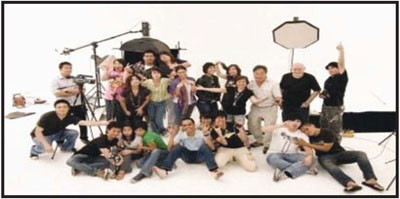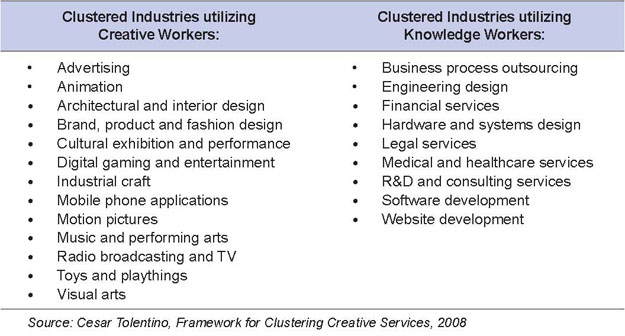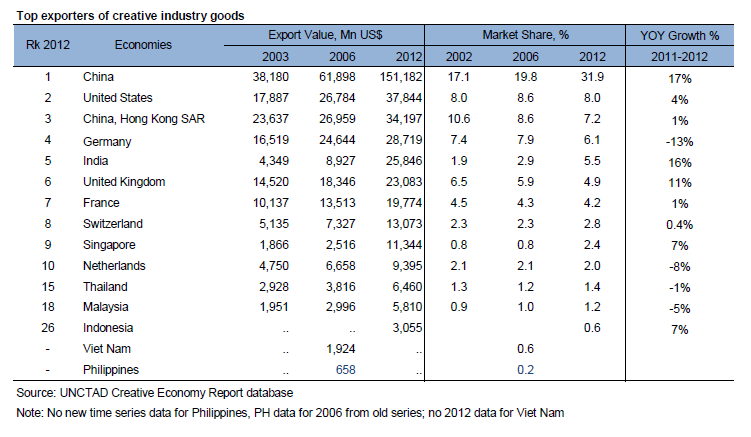Background (Creative Industries)
Sector Background and Potential
The Creative Economy is defined as industries which have their origin in individual creativity, skill, and talent and which have potential for wealth and job creation through the generation and exploitation of intellectual property.
In the Philippines creative industries include a wide array of subsectors including advertising, animation, architecture, broadcast arts, crafts, culinary arts, cultural/heritage activities, design, film, literature, music, new media, performing arts, publishing, and visual arts (see Table 25).
Filipinos enjoy a well-deserved international reputation for creativity. Filipino musicians and singers have long been global troubadours and in recent years are entertaining luxury cruise passengers and appearing on stage in West End and Broadway musicals. Filipino designers and crafts persons have helped the country to be known as the “Milan of Asia” in designer circles. However, the once vibrant Philippine film industry has lost market share to Hollywood imports, while its products have failed to gain the international following enjoyed by East and South Asian cinematographers.
With such a rich and varied base of creative talent, the Philippines should develop the full potential of its creative industries, enhancing its competitive advantage and improving its reputation and becoming better recognized. Unfortunately, there is a lack of understanding and appreciation of these creative industries as a whole. This is partly because the creative cluster cuts across multiple economic sectors and does not yet constitute a cohesive or distinct sector in the traditional sense of an industry cluster. In order to nurture the creative industries, it is vital to recognize and improve its entire landscape. As a critical starting point, the Philippine Creative Industries sector could be mapped in the near future.
There are also several Philippine constitutional prohibitions that work against full development of the sector. The practice of foreign professionals in some sectors in the Philippines, e.g. architecture, engineering, interior design, landscape architecture, law, and others is prohibited or restricted administratively by the Professional Regulatory Commission. Provisions in the Philippine Constitution ban all foreign equity in media and limit foreign equity in advertising to 25%.
Countries that have pursued the creative economy agenda have found sector mapping to be an essential basic tool to develop and promote their creative industry sector. When mapping the sector it is essential to consider whether “creative services” should be expanded to include “Knowledge Industries,” as the two sectors share many inter-linkages.






























